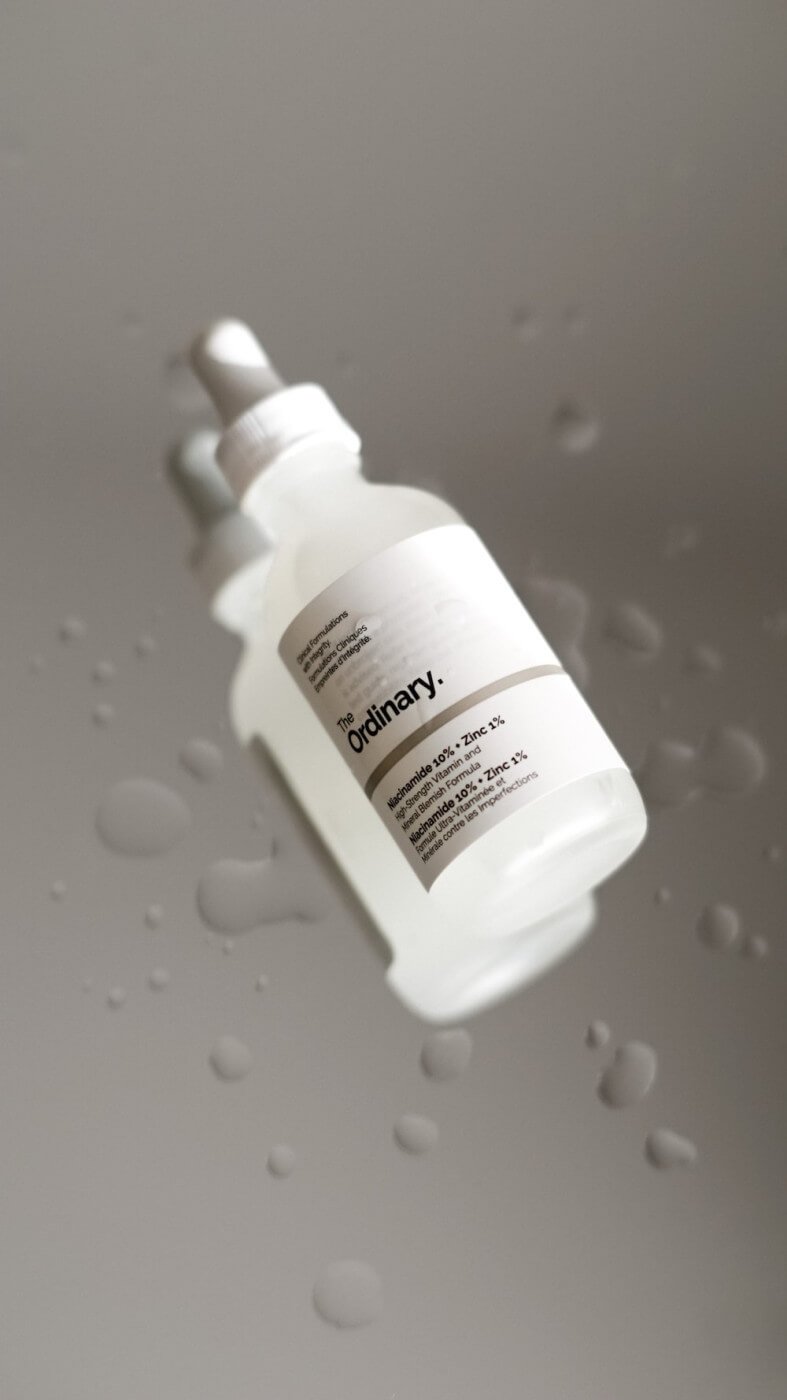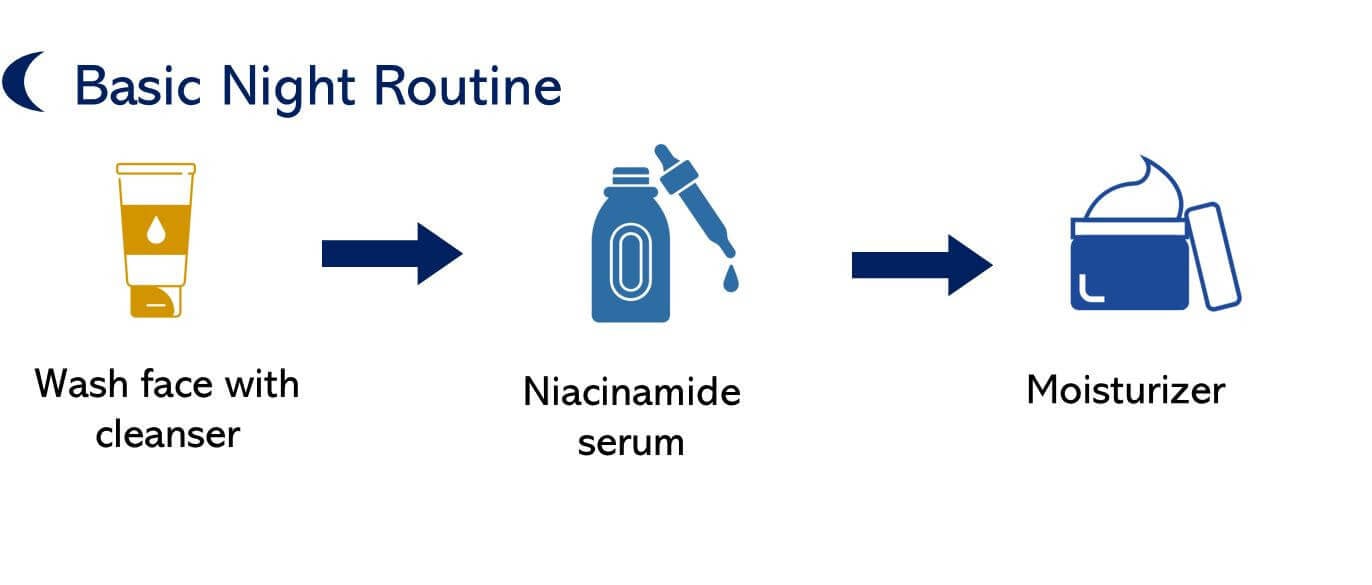Nowadays niacinamide has earned a place as one of the most popular active ingredients in skincare, and for many reasons.
In this article, we’ll explore the various skin benefits of niacinamide, what to look for in a serum, and how to use it according to renowned board-certified dermatologists.
What is niacinamide?

Niacinamide is a form of
vitamin
B3, a water-soluble vitamin that is essential to the health of the whole body and the skin [1].
As board-certified dermatologist
Dr. Davin Li
m
explains, niacinamide is considered a very flexible active ingredient to use, stating that it’s indeed one of the easiest
skincare vitamins
to implement due to its high tolerance and very low incidence of side effects, unlike vitamin A (aka retinol) or even vitamin C.
Niacinamide serums are a great way to incorporate the many skin benefits of niacinamide into your daily
skincare routine
since serums – thanks to their lightweight formulation – can deliver high concentrations of active ingredients into the skin to target or treat a particular skin concern.
What are the skin benefits of niacinamide?

According to board-certified dermatologist
Dr. Shereene Idriss
, topically applied niacinamide can exert many different functions in the skin, such as:
-
Increases skin immunity:
niacinamide has been proven to increase keratin production [2], which in turn can help keep the skin layer intact and protected. She explains that when the skin is broken up, we are more prone to infection, so keeping the skin intact and tightly connected – thanks to keratin – is key to maintaining the skin’s immune function and better protecting us against external factors. -
Enhances lipid barrier function:
niacinamide may also increase the production of ceramides [2]. Ceramides are lipids that act as an intercellular “glue” that holds skin cells together to keep skin soft and hydrated. By increasing ceramide production, the skin is able to retain its natural moisture, which helps with certain conditions such as eczema. -
Anti-inflammatory effect:
niacinamide has been proven to reduce the production of several mediators and molecules involved in the inflammatory process [1]. Thus, it may benefit people with acne who have inflammatory bumps and pimples. In addition, niacinamide may help reduce redness, which may be beneficial in patients with rosacea, as suggested by
Dr. Davin Lim
. -
Regulates oil production:
niacinamide 2% has been shown to control the production and excretion of sebum, responsible for facial shine and the formation of comedones [3]. -
Helps even out skin tone:
evidence shows that niacinamide may be an effective
compound
that works by inhibiting the transfer of melanin granules (aka melanosomes) from melanocytes to keratinocytes [4]. Although niacinamide alone may not be as effective for hyperpigmentation,
Dr. Shereene Idriss
explains that it can boost the effect of other ingredients, such as vitamin C, kojic acid, and arbutin, to help even skin tone. -
Antiaging activity:
niacinamide has been associated with the potential action of promoting dermal collagen synthesis and also inhibiting its degradation [1], which in turn can provide firmness, improve surface structure, and smooth fine lines and wrinkles [2].
So, what can niacinamide be used for?
Based on its many proven biological functions in the skin, niacinamide may be suitable for all
skin types
in order to treat different kinds of skin concerns. Board-certified dermatologists use it for:
- Acne-prone skin and oily skin.
- Hyperpigmentation (such as
dark spots
, melasma, or acne lesions). - Skin barrier repair (in compromised and sensitive skin types, rosacea, eczema, etc.)
- Aging skin.
- Sun damage.
What is the best concentration of use?

Now that you know its many benefits and potential uses, you may be tempted to think that the higher the concentration of niacinamide in your serum, the better, right? We are here to tell you
that’s not true.
You can find niacinamide serums at concentrations ranging from 2 to 20%, with the most common concentration being 10%. However, as board-certified dermatologist
Dr. Jenny Liu
points out, most of the benefits of niacinamide have been demonstrated at the lower percentages from 2 to 5%, while higher concentrations lack studies that actually demonstrate any benefit.
Indeed,
Dr. Shereene Idriss
stresses the fact that “more is not more”, and serums above 5% (like those formulated at 10%) may cause irritation, inflammation, and breakouts, all the skin concerns you actually want to treat.
In this order of ideas, most board-certified dermatologists recommend the use of niacinamide serums with a concentration between 2 and 5%.
In addition, you can look for serums that already combine niacinamide with other ingredients to minimize the number of products you use to treat your specific skin concern(s), as
Dr. Shereene Idriss
suggests.
Some recommended options include:
- Glossier Super Pure Clarifying Face Serum with Niacinamide + Zinc.
- Alpha-H Vitamin B with Copper Tripeptide Serum.
- First Aid Beauty Facial Radiance Niacinamide Dark Spot Serum.
- Vichy Mineral 89 Prebiotic Concentrate.
- Beauty of Joseon Glow Serum: Propolis + Niacinamide.
For those serums at 10%,
Dr. Shereene Idriss
explains that when they are formulated with zinc at 1% (such as The Ordinary Niacinamide Serum), zinc acts as an anti-inflammatory agent to reduce the potential inflammation of niacinamide at a high level.
How to use niacinamide serum properly?
The great thing about niacinamide,
Dr. Davin Lim
reveals, is that it blends well with most skincare active ingredients (like retinol and vitamin C for instance). In this regard, niacinamide serum can be used in conjunction with other skincare products without potential incompatibilities.
–
Should you use it in AM or PM?
It can be used either in the morning and/or at night, but most people prefer to use niacinamide serums at night, which is also advised by
Dr. Davin Lim
.
–
How to use it?
If you are new to niacinamide serum,
Dr. Shereene Idriss
suggests starting with a once-a-day application and observing how your skin responds to this new product.
When it comes to following a
skincare routine
, products should be applied following a specific order. In a basic skincare routine, serums are meant to be applied
after cleansing and before your moisturizer
(either if it’s an AM or PM routine).
A basic morning (AM) routine can look like this:

A basic night (PM) routine can look like this:

Why in that order?
Board–certified dermatologist
Dr. Muneeb Shah
divides skincare routines into 3 stages:
1. CLEANSE: It is important to remove dirt, sweat, oil, and impurities, to have your skin clean and ready to receive the benefits of your skincare products and active ingredients.
2. TREAT: This step is dedicated to the use of serums packed with active ingredients targeted to your skin’s specific concerns.
3. PROTECT: This step consists of applying moisturizer to protect the skin from moisture loss, followed by
sunscreen
(AM routine) to protect the skin from UV rays.
He explains that it is during the treatment phase that niacinamide will play its role on the skin, just before sealing it with a layer of moisturizer.
THE TAKEAWAY
Niacinamide has proven to be an excellent multifunctional active ingredient suitable for all skin types, capable of improving a wide variety of skin concerns with very good tolerance. While it is worth the hype, it is important to be aware that concentration plays a key role, and that to benefit the most from niacinamide without a possible inflammatory response, dermatologists recommend opting for serums with a concentration between 2 and 5%, the range that scientific evidence supports as effective and safe.
REFERENCES
[1] Boo, Y. C. (2021). Mechanistic Basis and Clinical Evidence for the Applications of Nicotinamide (Niacinamide) to Control Skin Aging and Pigmentation. Antioxidants,
10 (8), 1315. https://doi.org/10.3390/antiox10081315
[2] Gehring, W. J. (2004). Nicotinic acid/niacinamide and the skin. Journal of Cosmetic Dermatology, 3(2), 88–93. https://doi.org/10.1111/j.1473-2130.2004.00115.x
[3] Draelos, Z. D., Matsubara, A., & Smiles, K. A. (2006). The effect of 2% niacinamide on facial sebum production. Journal of Cosmetic and Laser Therapy, 8 (2), 96–101. https://doi.org/10.1080/14764170600717704
[4] Hakozaki, T., Minwalla, L., Zhuang, J., Chhoa, M., Matsubara, A., Miyamoto, K., Greatens, A., Hillebrand, G. G., Bissett, D., & Boissy, R. E. (2002). The effect of niacinamide on reducing cutaneous pigmentation and suppression of melanosome transfer. British Journal of Dermatology, 147 (1), 20–31. https://doi.org/10.1046/j.1365-2133.2002.04834.x

 By myulikeadmin
By myulikeadmin



